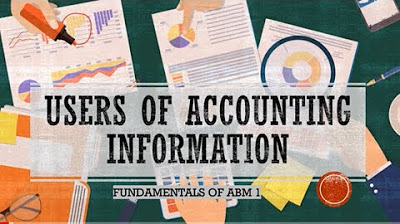Eps. 6 Mengenal Data Dan Informasi
Summary
TLDRThis video script highlights the importance of data in the digital age, emphasizing its crucial role in decision-making for both government policies and business strategies. It explains the difference between qualitative and quantitative data, the significance of credible sources, and how to effectively gather data through reliable platforms. The script uses an example of a worker searching for credible data to support arguments for menstrual leave in her factory, illustrating how to gather, validate, and use data accurately. The video encourages critical thinking in handling data and navigating through the overwhelming amount of information available online.
Takeaways
- 😀 Data is crucial in today's world, especially in the context of decision-making, policy development, and business strategies.
- 😀 Data helps inform government policies, such as improving healthcare outcomes like reducing diabetes-related deaths.
- 😀 In business, data is used to optimize sales strategies, targeting specific consumer demographics, and understanding market trends.
- 😀 Data is like an ingredient in cooking – it needs to be processed and analyzed properly to yield useful and accurate information.
- 😀 Information is the result of processed data and is used to explain specific conditions or support decision-making.
- 😀 Data can be categorized into qualitative (text, images, audio) and quantitative (numbers, statistics, diagrams) forms.
- 😀 Data can be obtained through various methods such as surveys, interviews, observations, and literature reviews.
- 😀 Primary data comes directly from original sources, while secondary data is derived from intermediaries, such as reports or reviews.
- 😀 Credible, valid, and accurate data is essential, and it's important to verify data sources to ensure reliability.
- 😀 The internet offers valuable sources of data, including government websites, mainstream media, and academic databases, but caution is necessary when assessing credibility.
- 😀 Practical examples, like how a worker gathers data about menstrual leave and productivity, demonstrate the importance of sourcing reliable and credible data for informed decision-making.
Q & A
What is the main theme of the transcript?
-The main theme of the transcript is the importance of data in decision-making processes, particularly in government policies, business strategies, and worker-related issues.
How is data relevant in decision-making, according to the script?
-Data plays a vital role in decision-making by providing insights that guide policies and strategies. For example, government policies may use data to reduce health issues like diabetes, while businesses use data to improve sales and target the right customers.
What are the two main types of data mentioned in the script?
-The two main types of data mentioned are **qualitative** data (e.g., text, images, voice, video) and **quantitative** data (e.g., numbers, statistics).
What is the difference between primary and secondary data?
-Primary data is collected directly from the source, such as surveys or interviews, while secondary data comes from intermediaries, like articles, books, or previous studies.
What is the importance of data credibility, validity, and accuracy?
-Data credibility ensures that the data comes from trustworthy sources, validity confirms it follows scientific standards, and accuracy means it reflects the real-world situation correctly.
What are some reliable sources of data mentioned in the transcript?
-Reliable sources include government websites, BPS (Badan Pusat Statistik), mainstream media like Tempo and Tirto.id, and verified platforms such as Gajimu.com.
What sources should be avoided when looking for data?
-Sources like Blogspot.com and WordPress.com should be avoided because they often contain unverified or unreliable information.
Can you give an example of how data is used in practice from the transcript?
-An example is Riska, a textile worker, who searches for data on menstruation's impact on productivity. She gathers reliable information from Gajimu.com and Tirto.id to support her argument for instituting menstruation leave at her factory.
Why is it important to use data properly, as highlighted in the transcript?
-Using data properly allows individuals and organizations to make informed decisions, support their arguments with evidence, and avoid spreading false or misleading information.
How does the transcript explain the relationship between data and information?
-The transcript explains that data consists of raw facts and figures, which are processed to become information. Information, in turn, provides insight and understanding based on data.
Outlines

Esta sección está disponible solo para usuarios con suscripción. Por favor, mejora tu plan para acceder a esta parte.
Mejorar ahoraMindmap

Esta sección está disponible solo para usuarios con suscripción. Por favor, mejora tu plan para acceder a esta parte.
Mejorar ahoraKeywords

Esta sección está disponible solo para usuarios con suscripción. Por favor, mejora tu plan para acceder a esta parte.
Mejorar ahoraHighlights

Esta sección está disponible solo para usuarios con suscripción. Por favor, mejora tu plan para acceder a esta parte.
Mejorar ahoraTranscripts

Esta sección está disponible solo para usuarios con suscripción. Por favor, mejora tu plan para acceder a esta parte.
Mejorar ahoraVer Más Videos Relacionados

Digital Transformation | What is Digital Transformation | Digital Transformation 2021 | Simplilearn

Le Marketing c'est quoi ? (définition, objectifs, mise en oeuvre)

Analisis Data Dalam Pemasaran Digital - Modul 10 Belajar Digital Marketing

FABM1: Users of Accounting Information INTERNAL & EXTERNAL. BAKIT BA NILA KAILANGAN ANG FS??

Types Of Urban Data [AP Human Geography Unit 6 Topic 9]

Vid # 4 BUSINESS MANAGEMENT ACCOUNTING Module 2 part 2
5.0 / 5 (0 votes)
